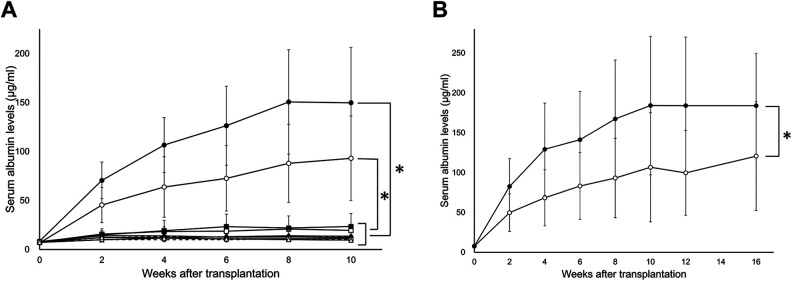Figure 1.
A comparison of the serum albumin levels after transplantation at various transplant sites. A total of 1.0×107 hepatocytes were transplanted into the liver via the portal vein (IPO group: •, solid line, n = 8), spleen pulp (IS group: ˆ, solid line, n = 8), liver parenchyma (LDI group: ▪, solid line, n = 8), omentum (pouch method: □, solid line, n = 8; thrombin method: ♦, solid line, n = 8), renal subcapsular (⋄, solid line, n = 8), ISWAT (▴, solid line, n = 8), muscle (△, solid line, n = 8), intraperitoneal cavity (•, dotted line, n = 8), and subcutaneous space (ˆ, dotted line, n = 8). (A) The serum albumin levels of all of the tested groups. The serum albumin levels of the IPO and IS groups were significantly higher than those of the other groups (p < .0001). (B) The serum albumin levels of the IPO and IS groups during the longer observation period. The serum albumin levels of the IPO group were significantly higher than those of the IS group (p < .0001). In both cases, the serum albumin levels appeared to plateau at 10 weeks after transplantation and remained high during the observation period.

